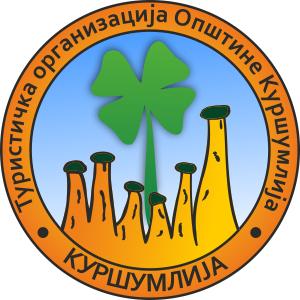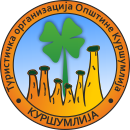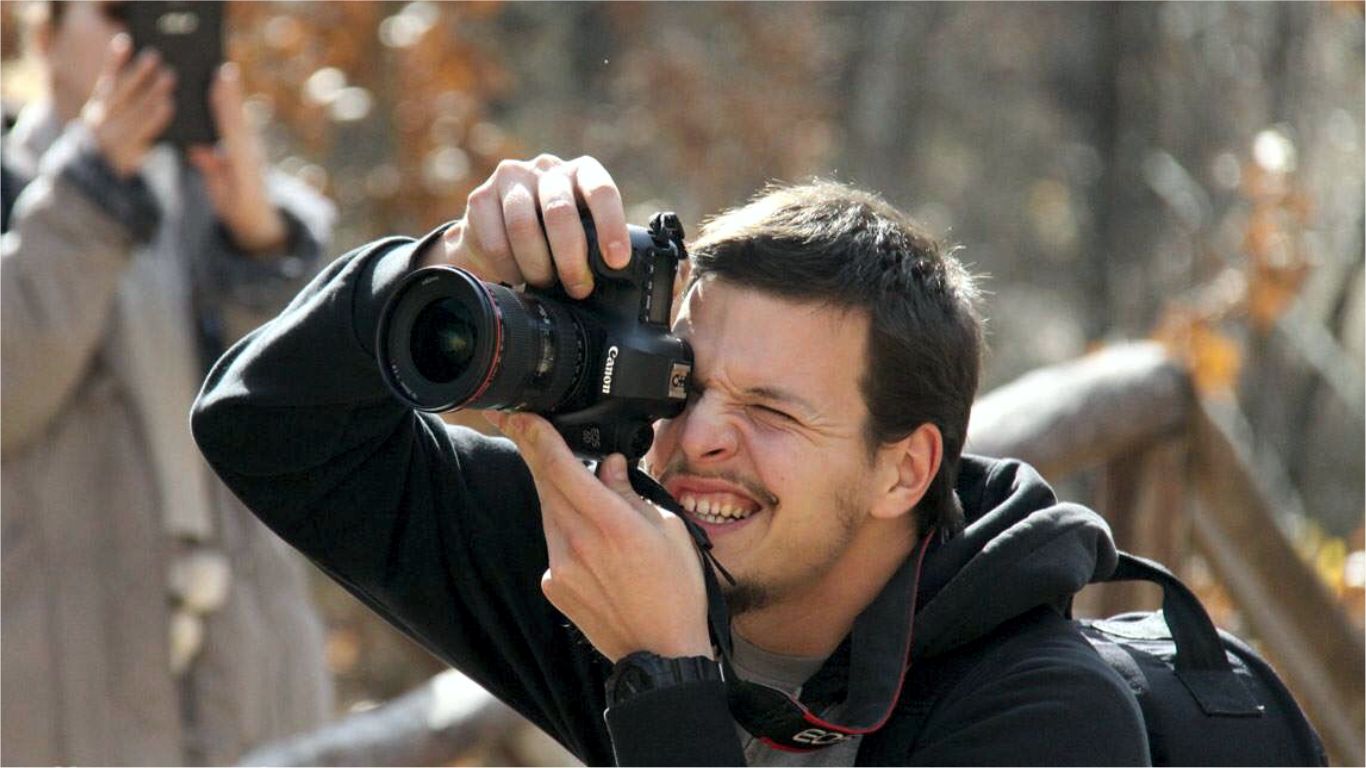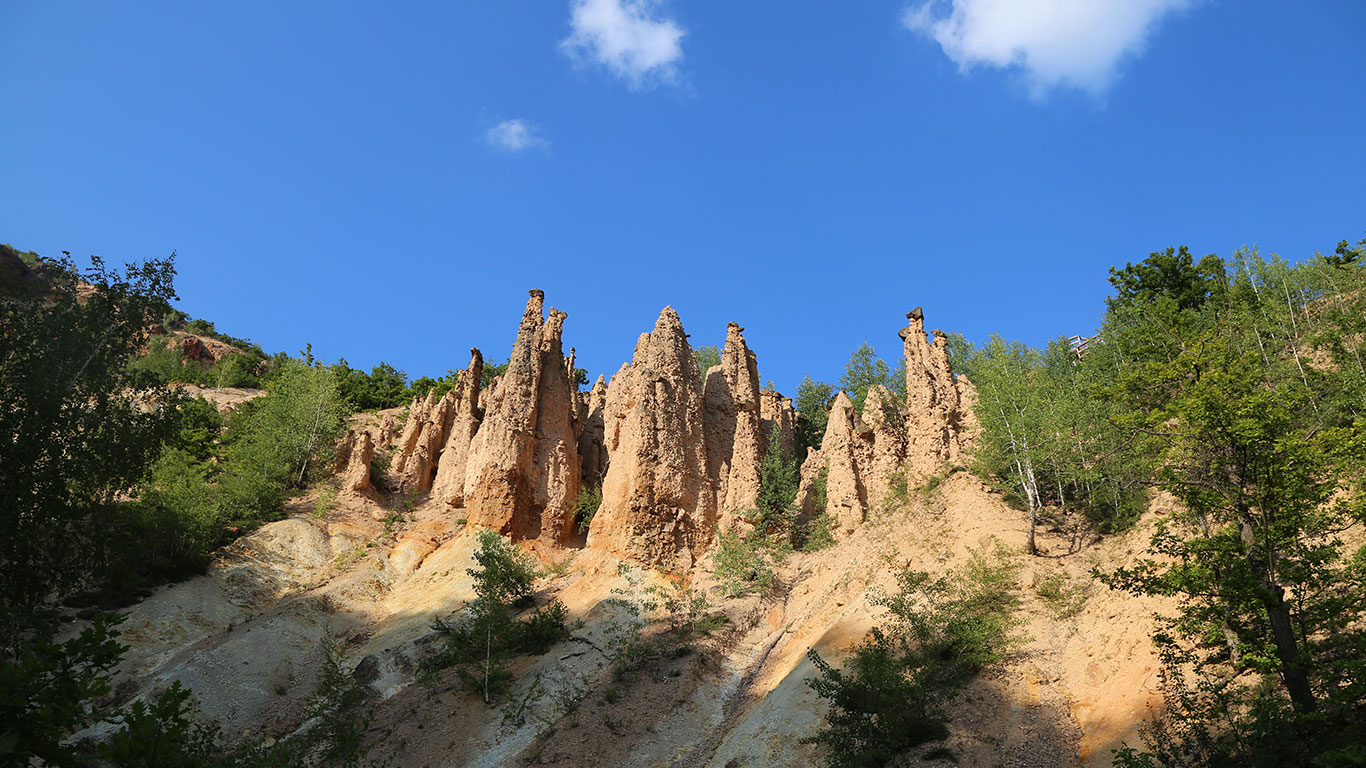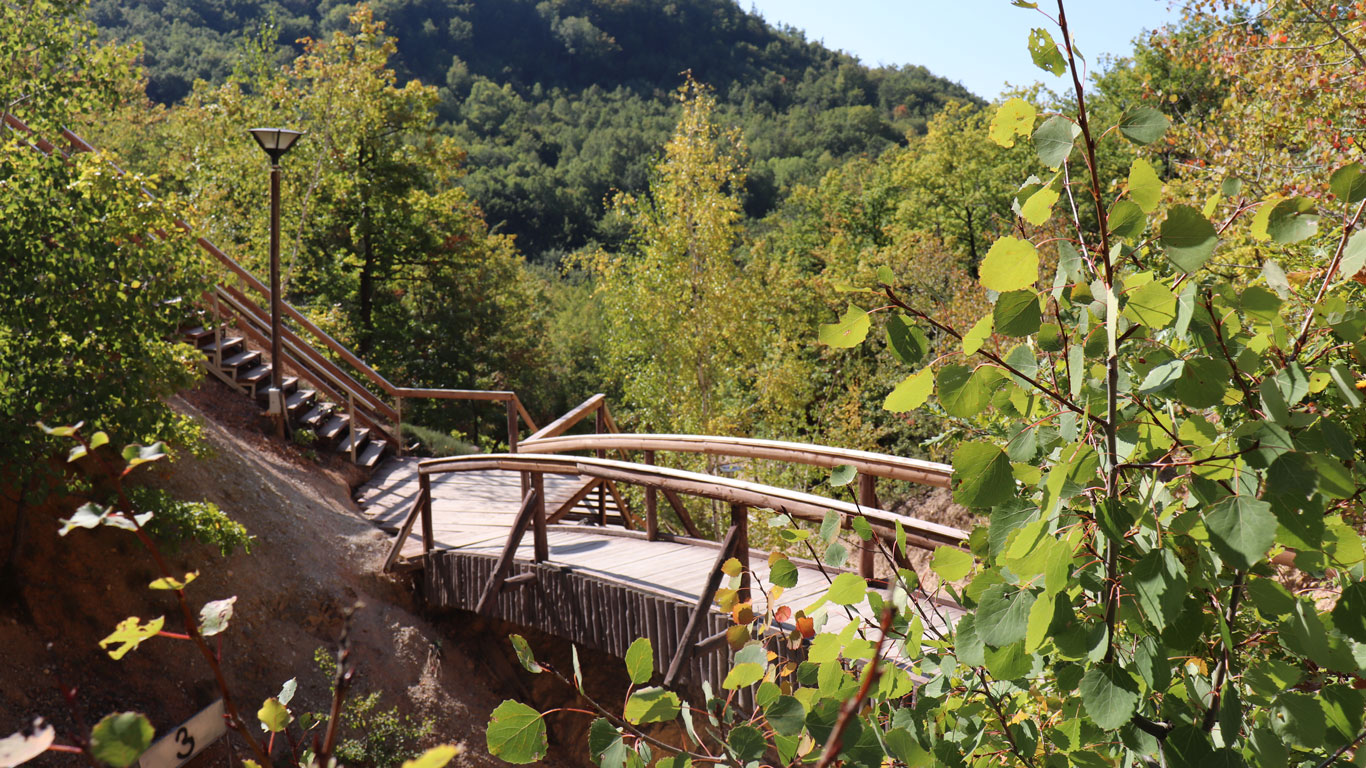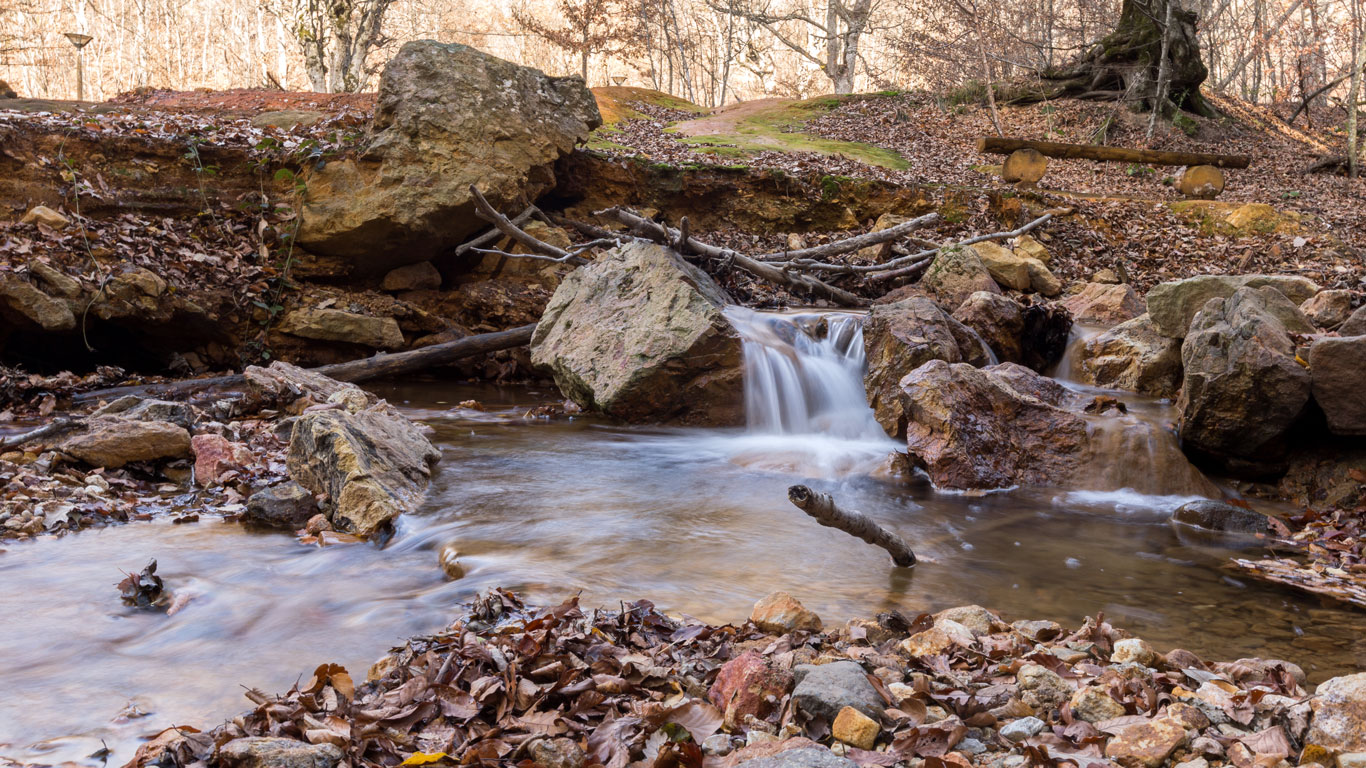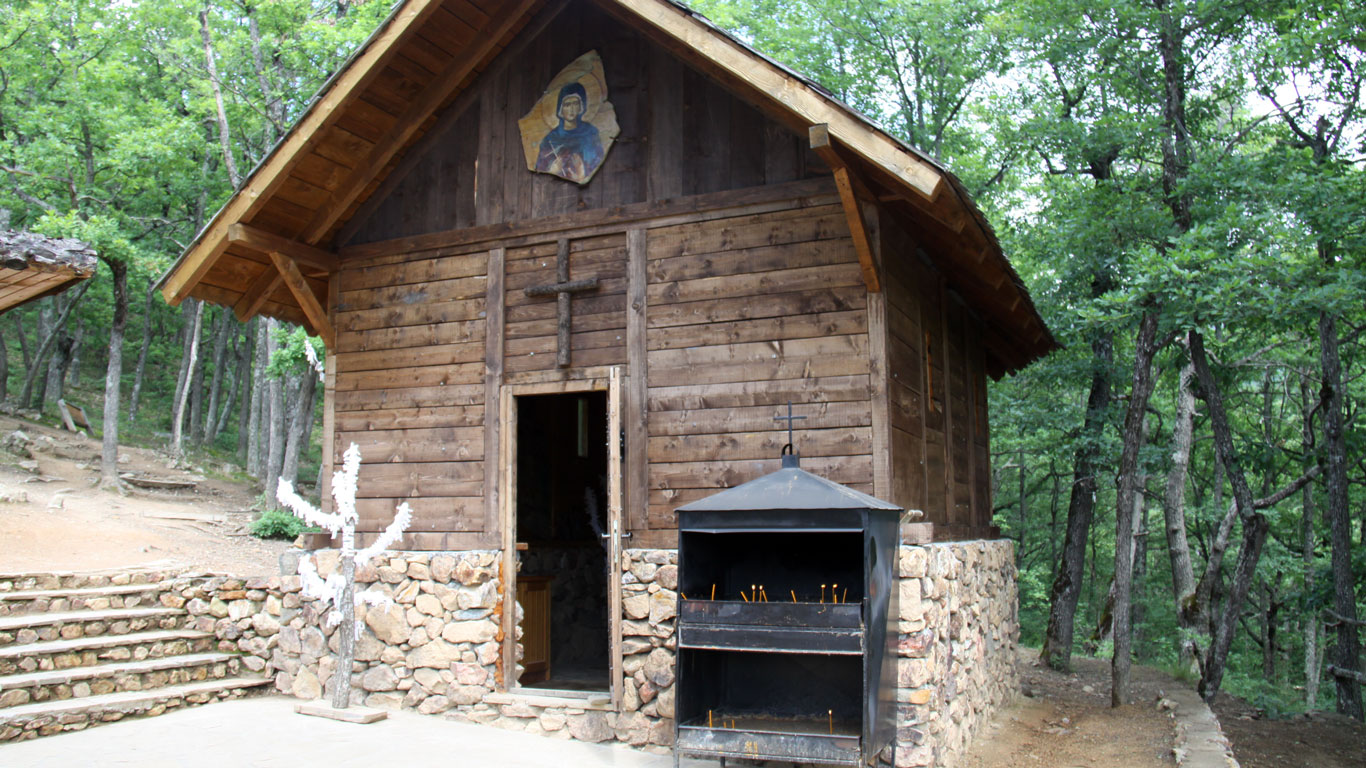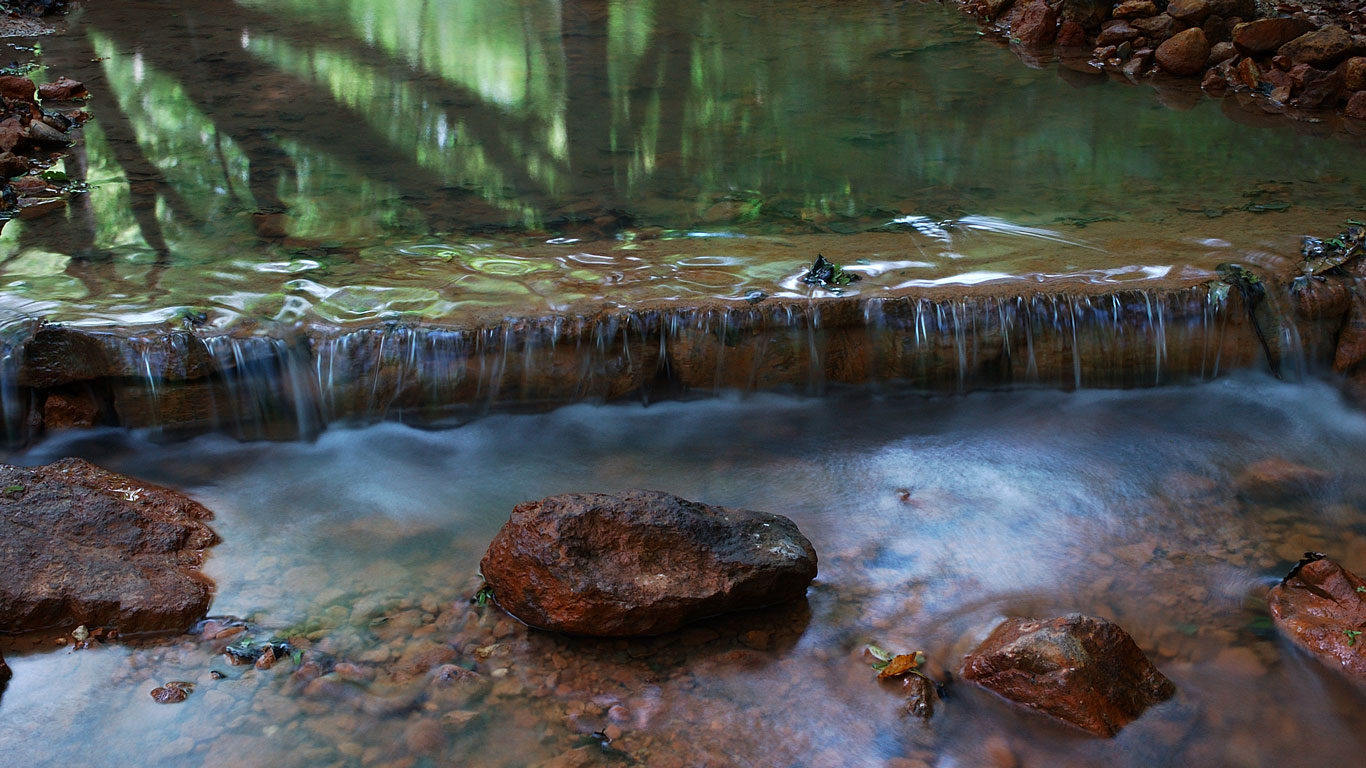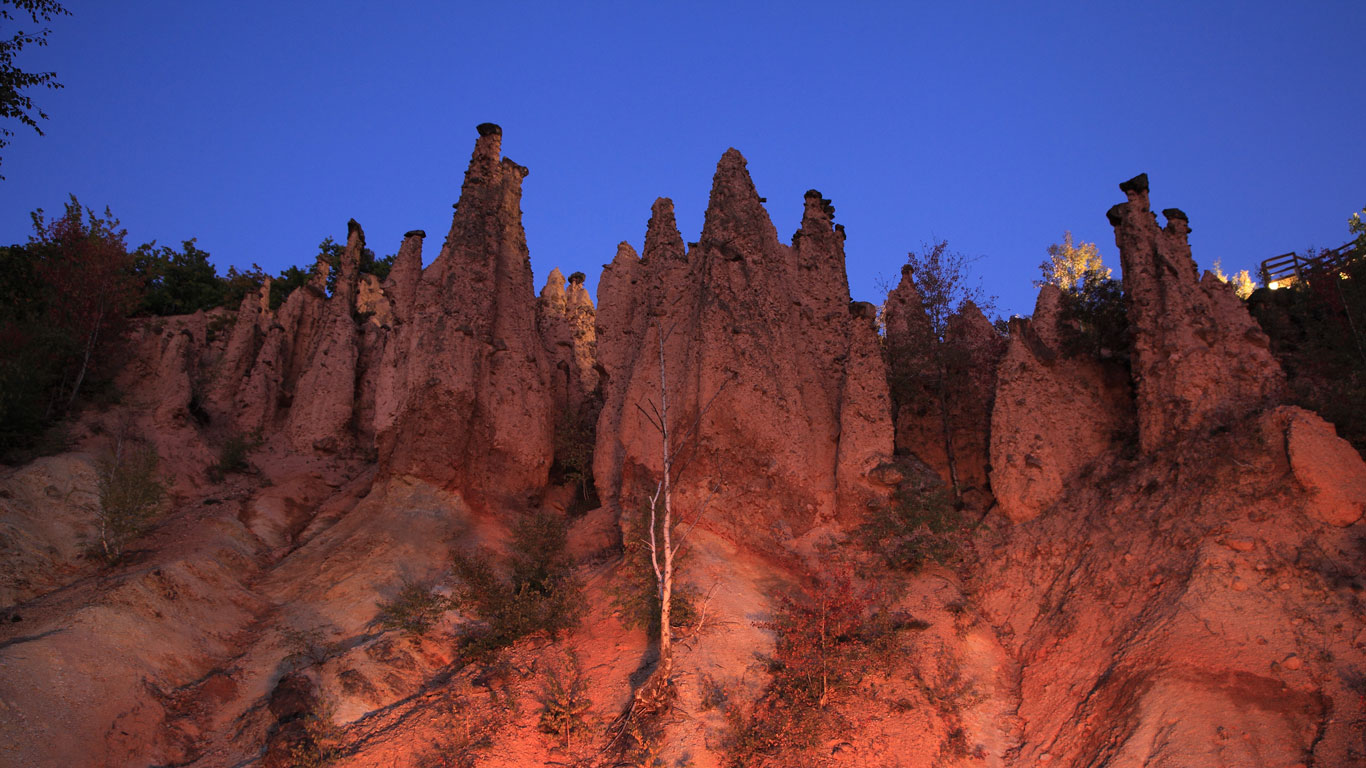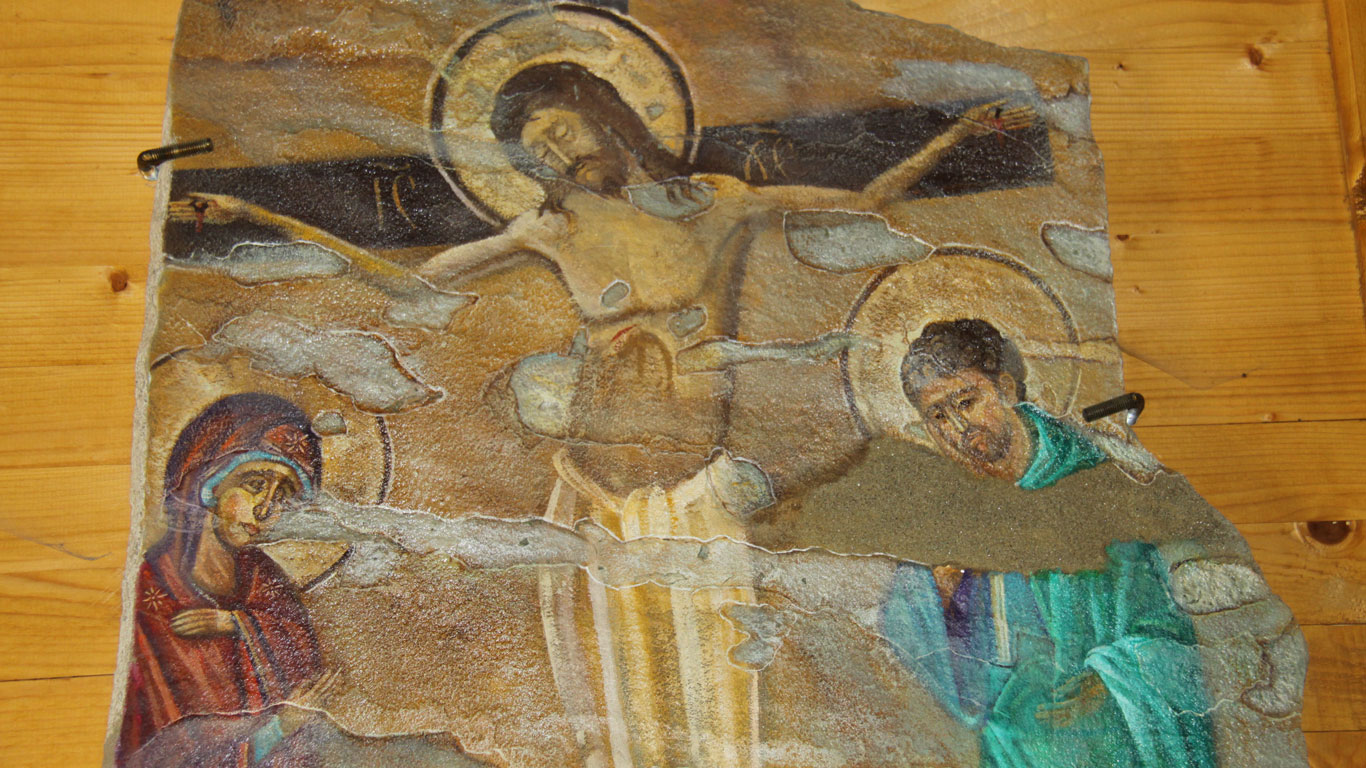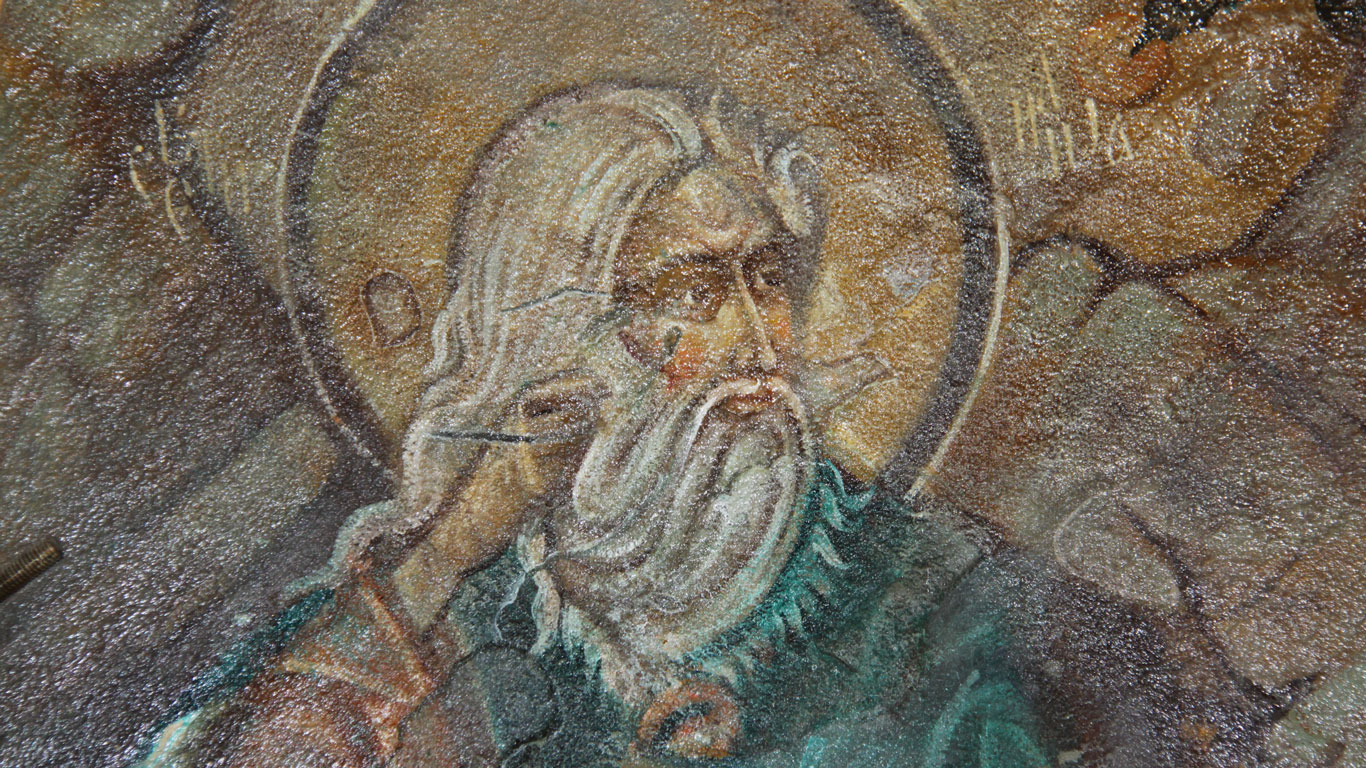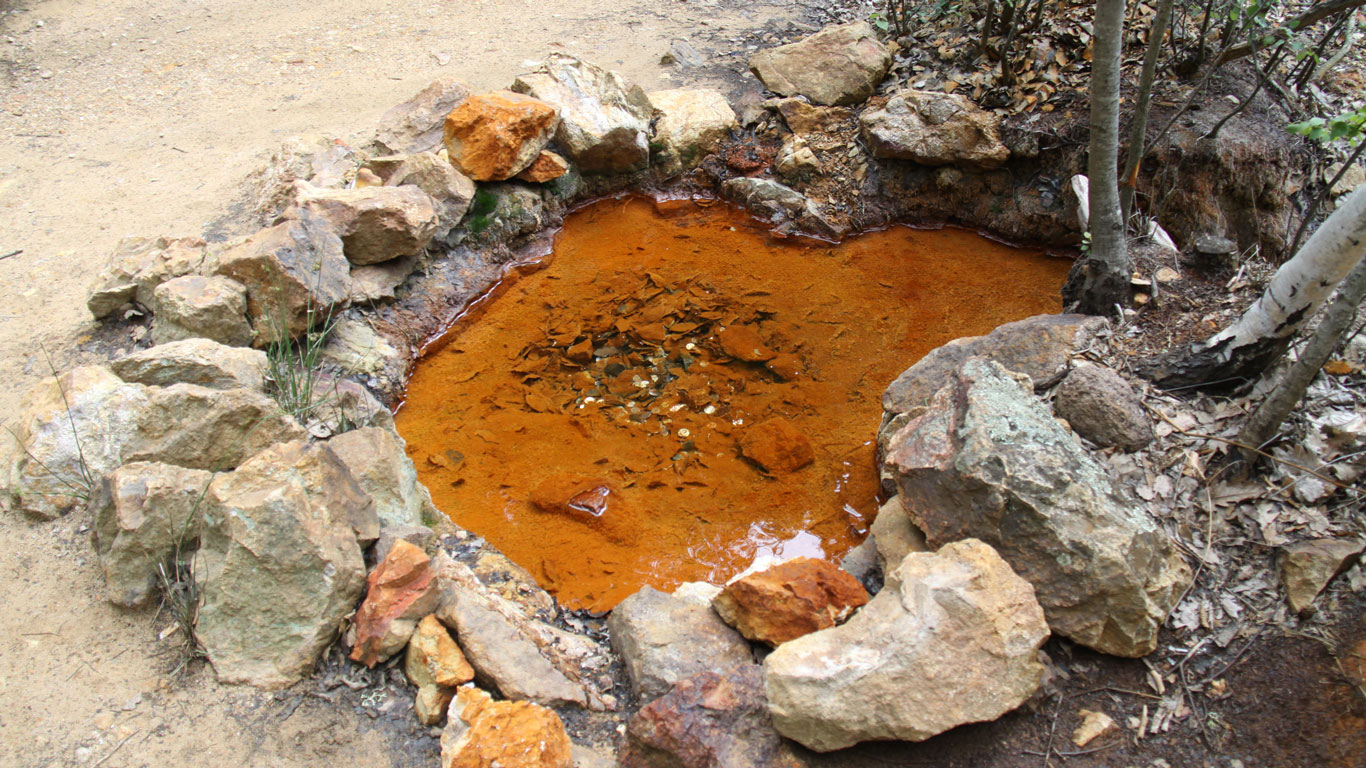The natural monument “Devil ‘s Town” is located in the area of the village Djake, southeast of Kursumlija (30 km). It can be reached by turning off the road Nis-Kursumlija-Pristina near Sastavci, then by a narrow asphalt road to the village of Zebice (5.7 km), then by a good asphalt road to the entrance to the protected area (3 km) and on foot to the lookout point (900 m). Devil ‘s Town can also be reached on foot from Prolom Spa, the so-called “Health Trail”, over Prolom mountain, in the length of 11 km, in two and a half hours of very hard walking.
This natural monument consists of two, rare natural phenomena in the world: earthen figures as specific forms of relief, which seem very attractive, and two sources of very acidic water with high mineralization.
The attractiveness of the phenomenon is complemented by the natural ambience, which around the earth figures seems cruel, almost mystical, and in the wider environment vivid and tame.
Clay figures
The figures (“pyramids”, “heads” or “towers”) are in the valley of Zuti potok (Yellow Creek), between Paklena jaruga (Hell’s ravine) and Djavolja jaruga (Devil’s ravine). The Devil’s Town consists of 202 figures, of various shapes and dimensions, 2 to 15 m high, 0.5 to 3 m wide, with stone caps on top. They are the result of a specific erosive process that lasts for centuries: they are formed, grow, change, shorten, disappear and re-create.
These forms of relief were created by the action of rainwater on the former topographic surface, which consists of a very loose but solid material. By washing the sand and gravel under the smaller or larger stone blocks, figures in the shape of towers or pyramids remain.
Earthen pillars are made of three layers of different composition: in the base is a layer of marl up to 1 m thick, in the middle yellowish clay up to 3 m thick, and above it is the thickest layer of sandstone, covered with andesitic slabs, which like a real umbrella protect loose surface from destruction. The material from which the heads are made, is firmly bound and covered with a crust of iron, limonite cement.
This geomorphological phenomenon is unique in our country and very rare in the world. In Europe, there are similar phenomena in the Alps (on both sides of the Brenner pass in Austria and Italy, near Bolzano, then in Valerien, in the province of Haute-Savoie, in France, etc.). However, the “towers” in Đavolja Varoš are larger and much more permanent, so this is the most famous natural monument of its kind in Europe. The “Garden of the Gods” in the USA was better known in the world.
Mineral springs
Cold rare mineral waters – In the immediate vicinity of Devil’s Town there are two waters with unusual properties. “Devil’s water” is a cold and extremely acidic (pH 1.5) source with high mineralization (15 g / l of water), and is located in “Devil’s ravine”. “Red (Devil’s) well” is the second source, slightly further from the first and closer to the entrance to the protected area, with a pH value of 3.5, and with a lower general mineralization (4,372 mg / l of water).
Legend
There are many legends about the origin of the Devil’s Town. According to one legend, the figures represent petrified wedding guests who, at the urging of the devil, wanted to marry brother and sister. According to the second, they are petrified devils who were outwitted by the students in the bet, and according to the third legend, the sculptures represent the devils that people got rid of by spending the night one night near the church of St. Petka, close to the figures.
This valuable site was placed under protection in 1959. Back in 1995, the Devil’s Town was declared a natural asset of exceptional importance by a Decree of the Government of the Republic of Serbia and was placed in the first category of protection. A total of 67 ha of land is protected. Devil’s Town is the only representative of Serbia in the selection for “7 world wonders of nature”.
Church of St. Petka
The Church of St. Petka in Đavolja Varoš was built on the foundations of a church from the 13th century. The church is built of wood.
One of the legends about the Devil’s Town says that the figures represent petrified devils that people carried on their backs for a long time, suffering evil and trouble. After spending the night next to the church of St. Petka, the people got rid of their demons and they remained petrified.
St. Petka helps the sick and unwilling who visit this place, hence the belief that it is necessary to touch the painful place with a handkerchief and think of a wish, and then tie the handkerchief to a pole, so that all torments and problems (devils) remain with the handkerchief in Devil’s Town. The handkerchiefs remain in this place for 7 days, and then they are buried and the torment remains in the ground forever.
Sasa mines
The original Sasa mines are located in Devil’s Town. In the 13th century, Uroš brought the Sasa tribe to mine these areas, since the entire area around Radan Mountain is extremely rich in ore, especially ore of iron, aluminum, gold and silver. The entrances to the mining shafts are very narrow since the Sasa were very skilled miners. The extracted ore was transported to the place of Rudare and processed there. In Devil’s Town, one mining shaft was explored, its entrance was widened and it is assumed that its length is approximately 800 m.
Ethno pub “Two barns” (Dva ambara)
Two kilometers from the natural monument Devil’s Town, next to Yellow Creek, there is an ethno tavern “Two barns”. With its ethno specialties and amazing nature, it provides an unforgettable experience.
